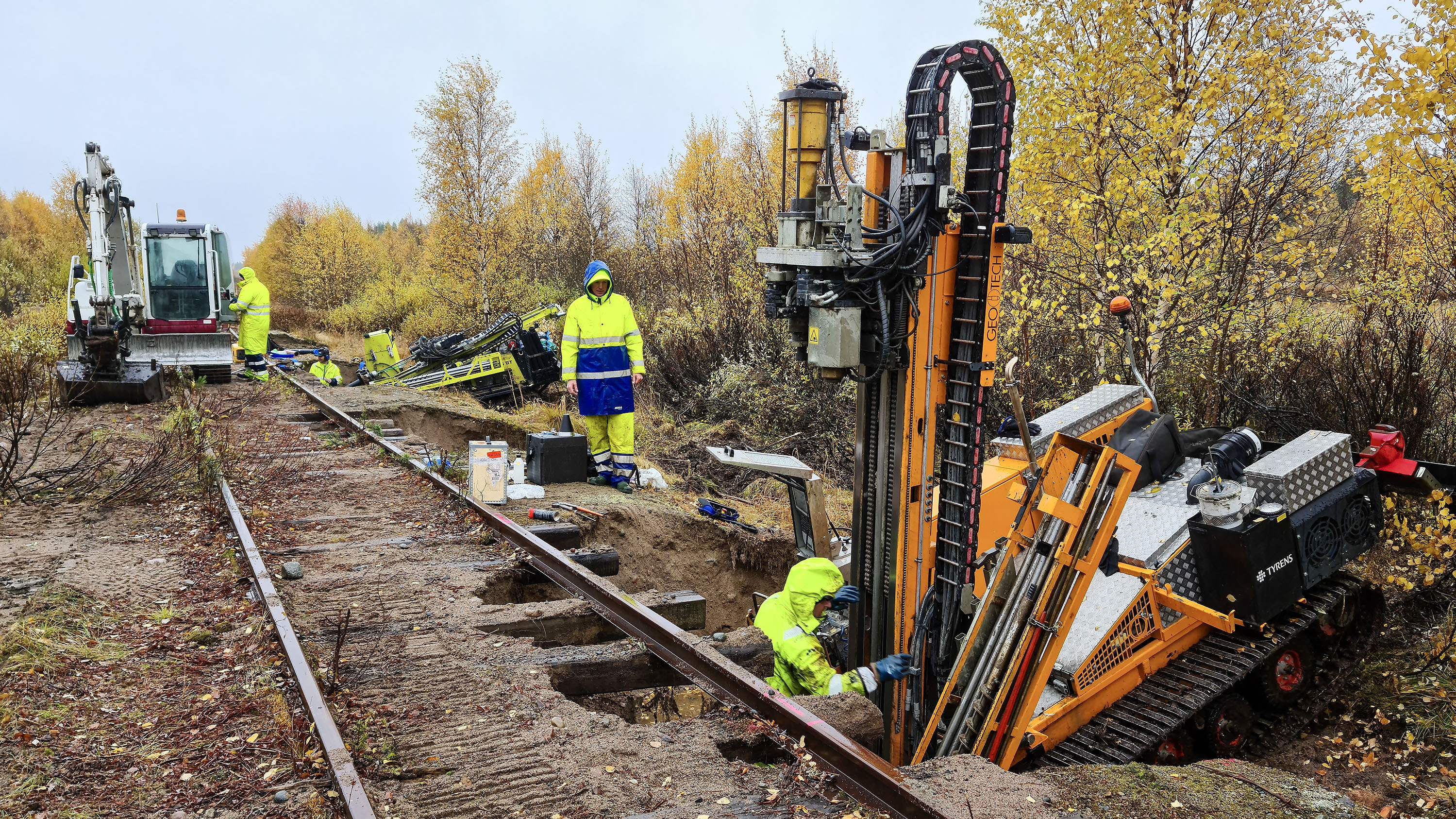New method could reduce the climate impact of reinforcing railway embankments on peat

Photo: SGI/Bo Vesterberg
For hundreds of years, roads and railways have successfully been built on peatland. A new research project can explain why embankments on peat provides such good stability, as well as how its strength should be investigated. With a newly developed in situ method for determining strength, certain reinforcement works may be avoided, providing environmental and economical benefits.
The research project, carried out by SGI in collaboration with the Swedish Transport Administration (Trafikverket), is now presented in a final report. The report provides practical recommendations that can be applied when investigating the strength of peat and when calculating the stability of railway and road embankments on peatland.
At disused railway embankments, SGI has measured the strength of peat beneath the embankments, as well as in the surrounding bogs. Fieldwork included probing and sampling, and laboratory tests were conducted to determine strength properties.
A new field method developed
As part of the research project, a new method for probing peat has been developed and verified, called CiPPT (Circular Probe Penetration Test).
— Internationally, there has been a lack of a reliable field method for determining peat strength. This new method can provide results that make it possible to avoid certain reinforcement works, which represents an environmental and economical gain, says Bo Vesterberg, researcher and head of peat research at the Swedish Geotechnical Institute (SGI).
An article on the new method has been published in the scientific journal AIMS Geosciences.
In a parallel project at SGI, a new peat sampler has also been developed, enabling higher-quality undisturbed peat samples to be collected in the field. This sampler was tested and verified for the first time within the framework of this research project.
Scientific article and reports
The reports are in Swedish, but include a summary in English.
Contact
Geoengineering Researcher Bo Vesterberg
About The Swedish Geotechnical Institute
The Swedish Geotechnical Institute (SGI) is a government agency under the Ministry of Climate and Enterprise. We are an expert authority working towards safe and sustainable community development. Our mandate includes reducing the risks of landslides and erosion, contributing to sustainable and safe land construction, and developing techniques and knowledge for dealing with contaminated sites.
